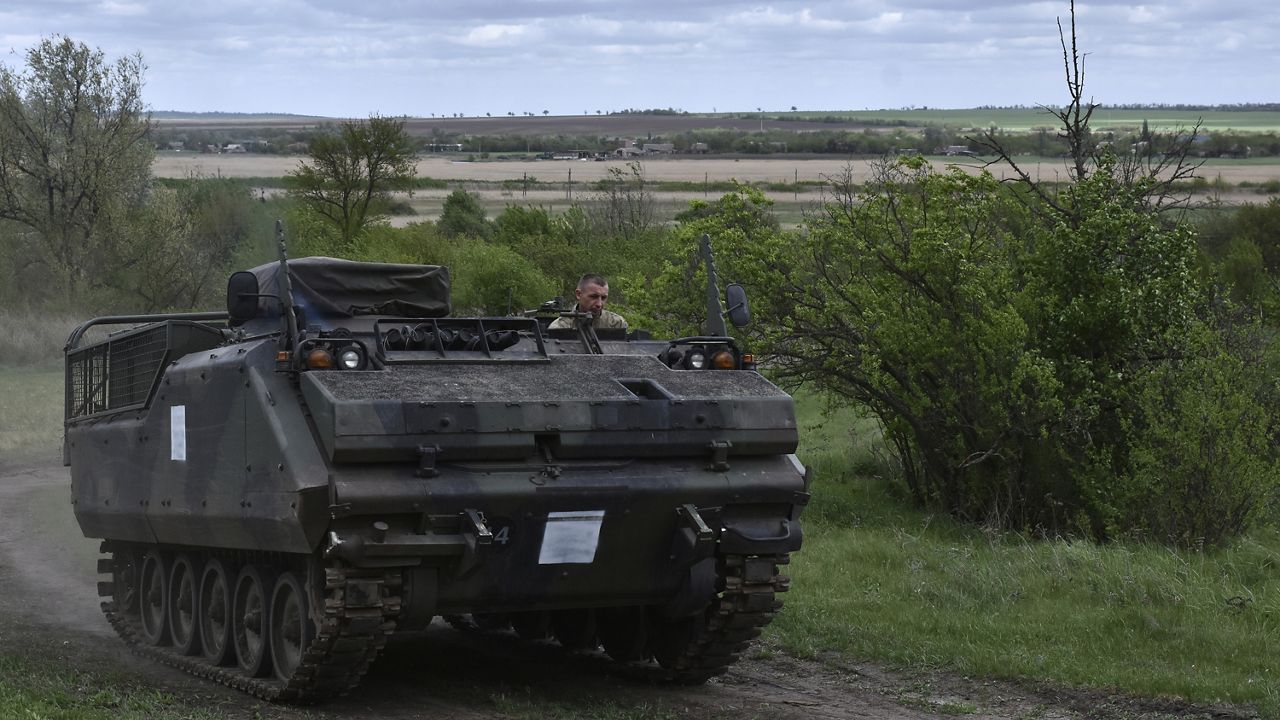Military spending around the world grew 6.8% in 2023 from the previous year, reaching the highest level ever recorded by the Stockholm International Peace Research Institute, according to a new report by the leading global security think tank.
While the report notes that global military spending has grown every year for nine straight years, the nearly 7% rise in 2023 from 2022 marks the sharpest year-on-year increase since 2009.
In total, the report found that spending on defense by countries around the world reached $2.43 trillion last year, with the U.S., China and Russia leading the way.
The U.S. far outspent any other country, with military spending in America reaching $916 billion last year, an increase of 2.3 percent.
Spending by member countries of the NATO alliance accounted for more than half, 55%, of the world’s military spending. Researchers behind the report note Russia’s invasion of Ukraine has “fundamentally changed the security outlook,” of NATO countries. Global leaders, including President Joe Biden, have repeatedly sought to relay the message that Russia could target other countries – including ones in the NATO alliance – if it is successful in Ukraine.
"This shift in threat perceptions is reflected in growing shares of GDP being directed towards military spending, with the NATO target of two percent increasingly being seen as a baseline rather than a threshold to reach,” said Lorenzo Scarazzato, a researcher with SIPRI, in the report.
While the report notes most European countries in NATO upped their military expenditure last year and when combined accounted for the largest share of NATO’s total military spending than it has in a decade, just 11 of 31 countries in the alliance hit the goal of spending two percent of their GDP on defense. In 2024, the alliance expanded to 32 member countries when Sweden joined.
The topic of military spending amongst NATO countries was thrust into the political spotlight earlier this year when former President Donald Trump suggested he would encourage Russia to “do whatever the hell they want” to members of the alliance that do not meet the set defense spending target.
Biden, who has touted NATO adding two new members during his time in office (Finland joined last year,) called his predecessor’s comment “dumb,” “shameful,” “dangerous,” and “un-American.”
European NATO countries accounted for 28% of the alliance’s military spending last year. The U.S. accounted for 68% of it and the remaining 4% came from Canada and Turkey, according to the report.
"A lot of the growth in European defense spending certainly relates to their changing threat perceptions of Russia and the increased need to stock up and build up European defense inventories," said Wes Rumbaugh, a fellow in the Missile Defense Project at the Center for Strategic and International Studies.
During the second year of Russia’s invasion of Ukraine, Russia’s military spending increased 24% from 2022 to 2023 while Ukraine’s increased 51%. Still, Russia outspent Ukraine on defense by more than $44 billion. However, the report notes that Ukraine also received billions of dollars in military aid from other countries last year.
The U.S. House of Representatives on Saturday passed additional aid to Ukraine months after Biden had initially requested new assistance for the country. The funding had been tied up in disagreements among U.S. lawmakers on the U.S. continuing to provide aid to the country. The Senate is expected to pass the assistance this week, potentially Tuesday, and Biden said he will sign it immediately.
Elsewhere in the world, China notched the second spot among the world’s top military spenders last year, allocating an estimated $296 billion to defense in 2023, according to the report. Other countries in the Indo-Pacific region ramped up military spending, with Japan and Taiwan both increasing defense spending by 11% in 2023 compared to the year before.
"The increasing defense spending of a country like China has led many of its neighbors to need to increase their defense spending in response to be able to counter those developments," Rumbaugh said. "There is plenty of unease in Asia also caused by North Korea's contining bellicosity that creates security problems for both Japan and South Korea."
The U.S. has sought to bring its allies in the Indo-Pacific closer to counter China amid concerns over Beijing’s aggressiveness in the region and particularly in the disputed South China Sea. Just this month, the U.S. and Japan announced new efforts to strengthen their security and defense alliance during Japanese Prime Minister Fumio Kishida’s official visit to Washington.
The House on Saturday also passed aid to Taiwan and allies in the region as part of Biden’s request for foreign assistance; the Senate advanced the measure on Tuesday.



